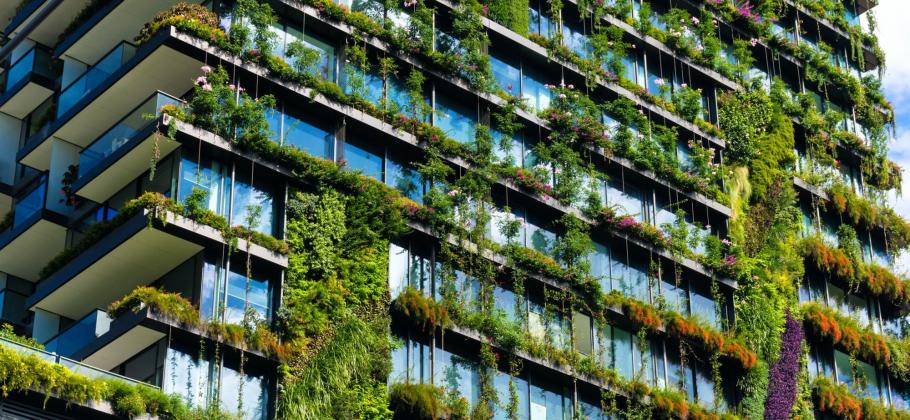Jul 2021
All you need to know about smart energy in buildings
Smart energy includes all of the technological and human solutions needed to achieve energy performance, also known as energy efficiency. Energy management, for its part, is an essential part of smart energy, and so is the management of comfort.

Defining smart energy
Smart energy includes all of the technological and human solutions needed to achieve energy performance, also known as energy efficiency. Energy management, for its part, is an essential part of smart energy, and so is the management of comfort.
Tomorrow, we may use the title of Comfort Manager as a position. So how should we interpret what smart energy is in buildings? And how can smart energy be an answer to the current regulations and, more broadly, to the climate emergency?
Of all the terms that describe how energy is controlled, smart energy is the broadest and the most complete expression. When we talk about energy management, we often focus on controlling our use of energy.
When the issue is seen through the lens of smart energy, companies and communities are consistent in some of their choices, since they reconcile energy savings with the occupants' comfort.
What is smart energy in buildings?
Being smart when faced with energy expenditures is a matter of common sense and stems from our awareness of the climate emergency.
But if common sense were the only thing we needed to regulate our energy consumption, the latter would have already gone down. To reach such a goal, human support and digital tools designed for the construction sector are needed
- determining the weak points of the infrastructure;
- improving overall energy performance ;
- lowering the energy bill and reducing costs;
- guaranteeing a certain level of comfort in the building.
To place smart energy at the heart of the company's activities and buildings, a diagnosis of the situation must be established. Large companies must conduct a mandatory audit.
The process can also be initiated through a voluntary approach, such as with the ISO 50001 standard, a certification for organisations of all sizes. Personalised solutions – both human and technological – can also be implemented. Energy efficiency is the main objective in both cases.
The human side of smart energy
Smart energy implies that the people who use a building's energy sources get involved in these new processes. It can be tempting to delegate everything to computers, but human beings must stay in control while also using digital technology to make new choices.
Energy consumption is a part of change management.
In any business, managing change is always a challenge. But if the people involved support such a change and if its foundations are solid, it can be successful. The challenge is similar in the case of smart energy: all of the collaborators in the building must have the same objective of lowering their energy consumption while maintaining the same levels of comfort. This approach is therefore part of a coherent CSR strategy.
Involving everyone
Human support is essential when choosing an energy management solution. Energy managers can set up strategies that include all relevant parties. This can take the form of actions that are both rewarding and informative and which allow everyone to move forward in the same direction. Competitions around eco-friendly actions can be organised to bring together all members of staff in a fun and constructive way.
Online infographics detailing energy consumption can also be made available to show how energy consumption increases and decreases. Everyone can therefore be involved and positive emulation can occur around this very important topic.
This approach also involves measuring the comfort of the building's occupants. This does not only mean looking at temperature levels (heating or air conditioning, depending on the seasons), but it also means analysing indoor air quality, CO2 levels, and even hygrometry.

The digital aspects of smart energy
Smart energy is closely tied to the digital world, to algorithms, to connected objects, to artificial intelligence, and to web platforms that monitor energy. For the strategy to succeed, the right tools and the right partners are needed. These will offer custom solutions with specific applications.
How are IoT sensors used?
IoT sensors, or connected objects, form the basis of energy management. Through them, electricity and water consumption can be controlled. They can also detect breakdowns and wasteful areas; they can anticipate and, therefore, be included in a predictive maintenance process.
Artificial intelligence and algorithms serving smart energy
These sensors collect data continuously. The data, when linked to artificial intelligence, are processed by algorithms. These can then meet the occupants' needs while limiting energy consumption. Depending on the results obtained each day, artificial intelligence optimises energy consumption while also offering a comfortable solution to users.
A monitoring platform to visualise smart energy
Since the dashboard is on the cloud and is available on all terminals, managers and those who are responsible for energy expenditures have access to all energy output.
They can consult many key consumption indicators, potential waste areas or breakdowns. With this information, concrete ways of improving the situation can be found. They can download reports, collect the information they need and share it with their teams to manage change. These reports are useful in the context of corporate social responsibility, of mandatory audits in the case of large companies, or to achieve substantial savings and to begin the process of obtaining the ISO 50001 certification.
Whatever your objectives – CSR, audit, budget, ISO 5000 – Datanumia is there to support you through the smart energy process and to help you meet your obligations.
We are a key player in energy management for companies and communities, and we provide solutions with immediate and long-term effects when it comes to our clients’ energy consumption and utilities bills.
Last news



